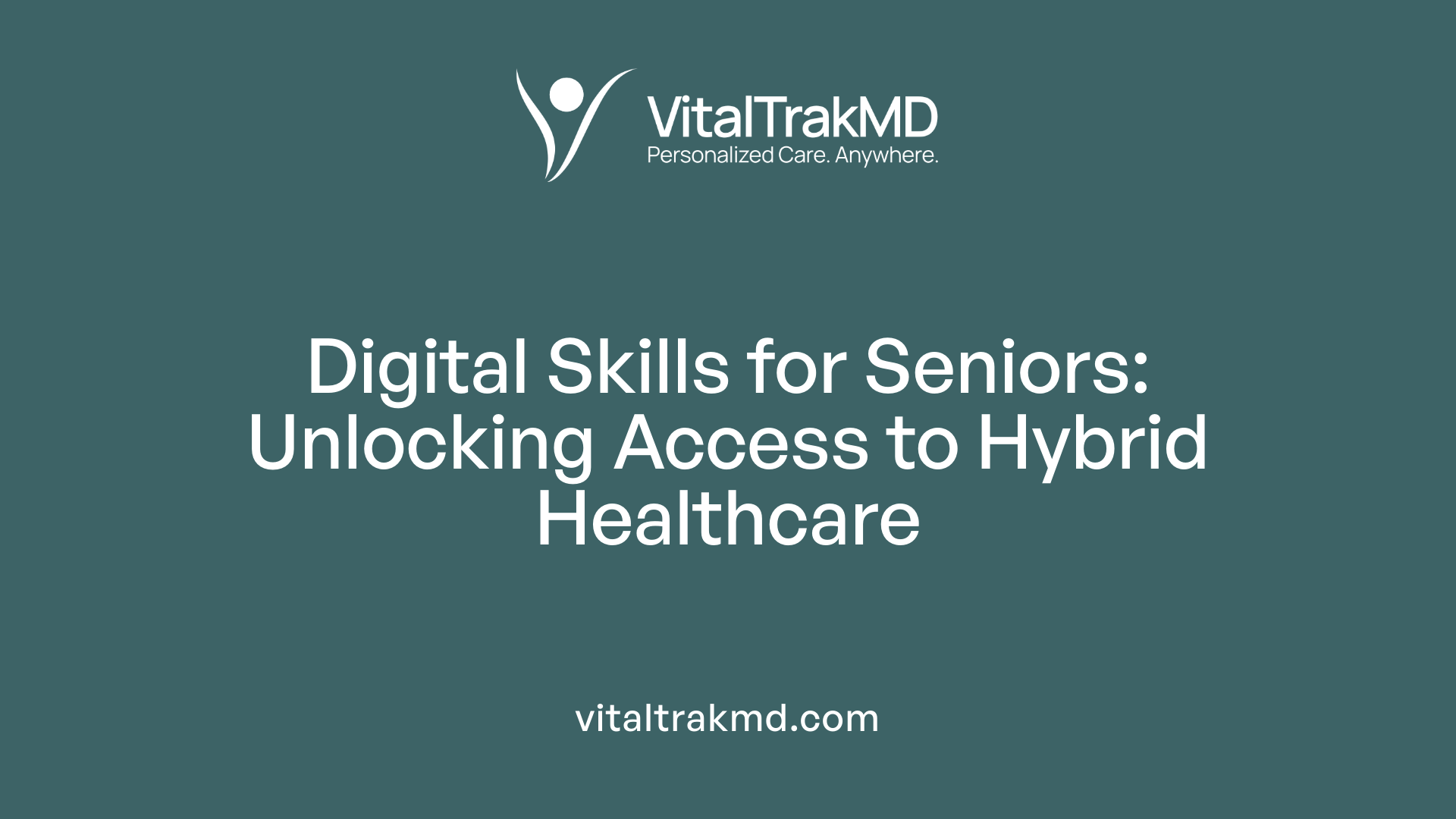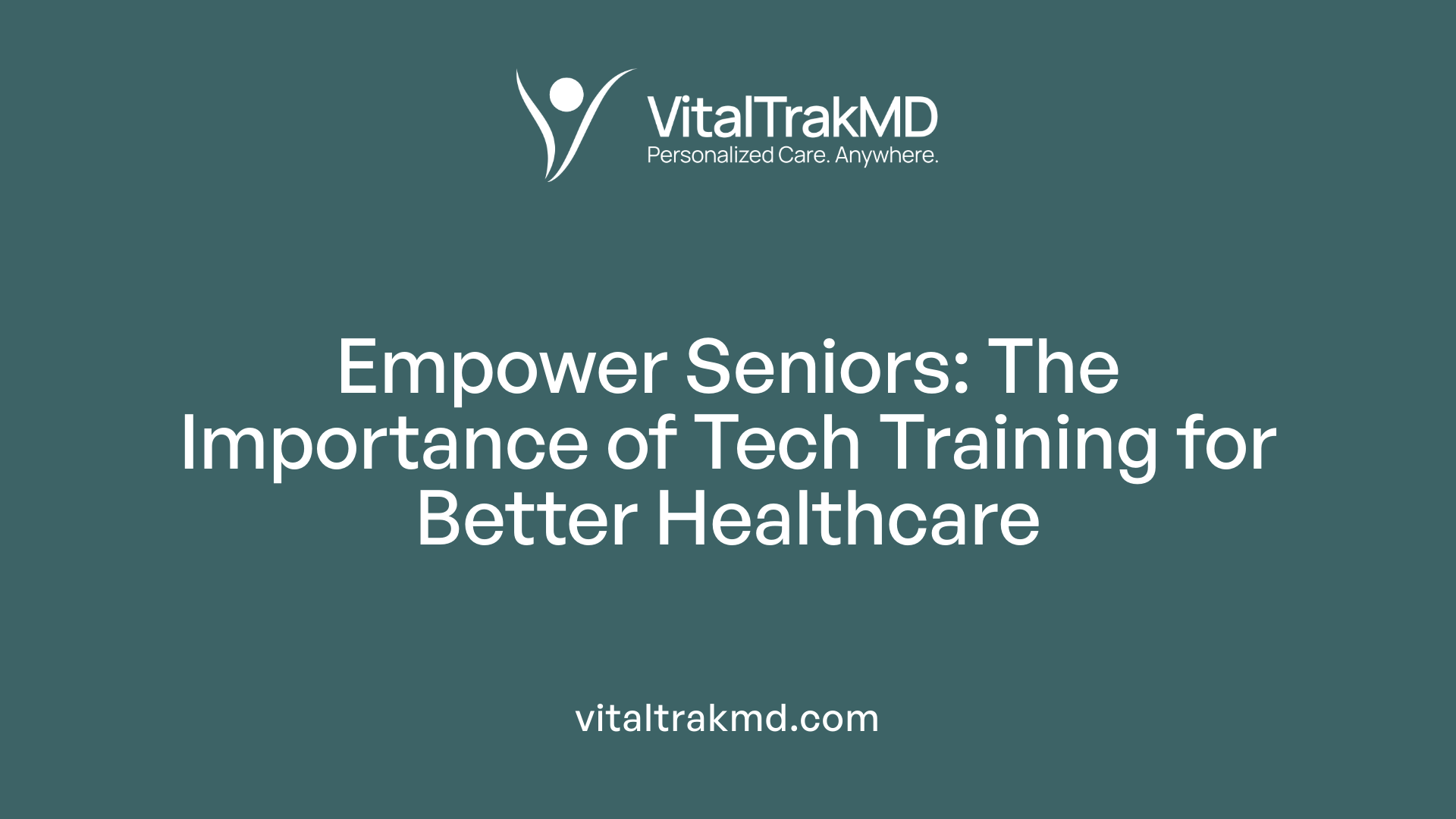Do Seniors Need Tech Skills to Use Hybrid Healthcare Programs?

Adapting Healthcare for an Aging Population
As the world witnesses a demographic shift with more individuals over 65 than under 5 by 2030, healthcare must evolve to meet the needs of older adults. Hybrid healthcare models—combining in-person and digital interactions—offer promising solutions for enhancing accessibility and personalized care. However, the successful integration of these models hinges on the digital competencies of seniors. This article explores the essential role of technology skills in enabling older adults to benefit from hybrid healthcare programs, the barriers they face, and strategies to foster digital literacy.
Technologies Powering Elderly Healthcare Today
What are the main technologies used in elderly healthcare?
In recent years, a variety of innovative technologies have transformed healthcare for older adults. Wearable health devices are among the most prevalent, including fitness trackers, smartwatches, and medical-grade wearables. These devices continuously monitor vital signs such as heart rate, blood pressure, oxygen saturation, and activity levels. They enable older adults and caregivers to track health data in real-time, supporting timely interventions.
Telehealth platforms have seen a significant rise, especially accelerated by the COVID-19 pandemic. These services facilitate remote consultations with healthcare providers, reducing the need for in-person visits and making healthcare more accessible. Virtual appointments, telemedicine apps, and remote monitoring tools have expanded reach, especially for seniors with mobility challenges.
Sensor-based monitoring systems are widely used for safety and daily routine management. These include vibration sensors, fall detection devices, and smart home systems equipped with voice controls and motion sensors. They help track daily activities, alert caregivers in case of emergencies, and support independence while maintaining privacy.
Assistive technologies enhance the quality of life for older adults. Medical alert systems, advanced hearing aids, and smart assistive devices simplify task management and improve safety. These tools are designed for ease of use, helping seniors maintain independence at home.
Robotic aids and virtual reality (VR) tools further support mobility, cognitive health, and social engagement. Robots can assist with physical support and companionship, while VR experiences provide cognitive stimulation and connection to social activities, combating loneliness.
Integrated health platforms like I-Care exemplify a comprehensive approach. They combine task management, medication reminders, emotional support, and health tracking into a unified system. This holistic integration helps address the diverse needs of older adults.
The evolving landscape of elderly healthcare technologies aims to improve health outcomes, promote independence, and foster social connectivity, all while addressing user-specific needs and ensuring data security.
| Technology Type | Main Applications | Benefits |
|---|---|---|
| Wearable Devices | Vital signs, activity tracking | Continuous health monitoring, early alerts |
| Telehealth Platforms | Remote doctor consultations, health advice | Increased access, reduced travel, convenience |
| Sensor-Based Monitoring | Fall detection, environment safety | Enhanced safety, timely emergency response |
| Assistive Technologies | Hearing aids, medication management, emergency alerts | Independence, safety, improved communication |
| Robotic Aids & VR Tools | Mobility support, cognitive and social engagement | Reduced loneliness, improved mobility and mental health |
| Integrated Health Platforms | Task management, emotional support, health data integration | Holistic care, personalized interventions |
Understanding and integrating these technology types can significantly improve the quality of elderly care, supporting aging in place while providing peace of mind for families and caregivers.
Impact of Technology on Healthcare Accessibility for Seniors

How does technology impact healthcare accessibility for seniors?
Technology plays a transformative role in making healthcare more accessible to older adults. Remote consultations via telehealth platforms and digital health tools have significantly reduced barriers caused by physical limitations, mobility issues, or living in remote areas. During the COVID-19 pandemic, the rapid expansion of telehealth services allowed seniors to receive medical advice, manage chronic conditions, and stay connected with healthcare providers without the need for in-person visits.
The rise of smartphones, computers, and wearable devices has empowered seniors to monitor their health continuously. Mobile health apps enable tracking of vital signs, medication adherence, and symptom management, promoting greater independence. Wearable health devices can alert caregivers to falls or other emergencies, facilitating timely intervention.
Despite these advancements, certain obstacles still exist. Limited digital literacy, visual and hearing impairments, and socioeconomic disparities can restrict access to these technologies. Many seniors lack the necessary devices, internet connectivity, or skills to fully benefit from digital health solutions.
To bridge this gap, targeted education programs, user-friendly device designs, and community support are crucial. Initiatives such as training sessions, intergenerational technology support, and simplified interfaces help older adults navigate digital tools confidently. Furthermore, policies must address affordability and infrastructure issues to ensure equitable access.
By addressing these barriers, technology can significantly improve healthcare access, enabling seniors to manage their health effectively, reduce social isolation, and achieve better overall outcomes.
| Technology Type | Benefits | Challenges | Strategies for Inclusion |
|---|---|---|---|
| Telehealth | Access to care from home, reduces travel | Digital literacy gaps, insufficient internet | Training, user-friendly platforms, community support |
| Wearable Devices | Continuous health monitoring, fall detection | Cost, device complexity | Subsidies, simplified devices, caregiver involvement |
| Mobile Apps | Disease management, appointment scheduling | Tech familiarity, visual impairments | Step-by-step guides, audio assistance, large fonts |
| Smart Home Systems | Independence, safety automation | Setup complexity, privacy concerns | Hands-on support, clear privacy policies |
Overall, leveraging technology thoughtfully can create a more inclusive healthcare environment for seniors, helping them stay healthier and more connected.
Digital Skills: A Necessity for Senior Participation in Hybrid Healthcare

Do seniors need specific digital skills to participate in hybrid healthcare programs?
Yes, older adults often require particular digital skills to engage effectively with hybrid healthcare programs that blend in-person and online services. Many seniors face challenges due to limited digital literacy, which can make navigating telehealth platforms, managing online health records, or participating in virtual consultations intimidating.
Bridging this gap involves providing targeted training programs designed to enhance digital competencies among seniors. Such education focuses on straightforward use of smartphones, tablets, or computers, as well as understanding online safety practices and privacy concerns.
User-friendly digital health platforms that are easy to navigate are essential. These platforms should incorporate large fonts, simple interfaces, and clear instructions, catering to generational preferences and abilities. Particular attention should be paid to addressing visual, hearing, and cognitive impairments that may hinder technological interaction.
Community support plays a vital role in fostering confidence and independence. Many programs involve local senior centers, healthcare providers, and community members—including retired IT professionals and volunteers—to offer ongoing assistance.
Tailored educational approaches that recognize individual learning paces and needs are more effective than generic tutorials. Incorporating intergenerational learning—such as involving younger family members or students—can further enhance understanding and acceptance.
Ultimately, equipping seniors with essential digital skills not only promotes equitable access to healthcare but also empowers them to participate fully in the benefits of hybrid medical services, maintaining independence and improving overall health outcomes.
Barriers and Facilitators in Technology Adoption Among Older Adults

What barriers do older adults face in adopting technology for healthcare?
Older adults encounter several obstacles when it comes to embracing digital health tools. Physical limitations play a significant role; many experience reduced vision, hearing impairments, or dexterity issues that make using small or complex devices difficult.
Cognitive challenges and unfamiliarity with technology also hinder adoption. Limited digital literacy, difficulty understanding digital instructions, and discomfort with new devices can discourage use of health apps, telehealth, or wearable devices.
Negative attitudes rooted in societal ageism serve as psychological barriers. Some older adults believe they are too old or incapable of learning new technologies, or think these tools are unnecessary, which discourages engagement.
Design flaws in digital health technology can create accessibility issues. Small controls, unclear interfaces, and complicated manuals are not senior-friendly and can increase frustration.
Socioeconomic factors further limit access. High costs, lack of internet connectivity, limited device ownership, and absence of training or support make it difficult for many older adults to utilize these resources effectively.
Disparities based on income, geographic location, and medical complexity also influence technology adoption. Rural residents, those with lower incomes, or individuals with multiple health challenges often face additional hurdles due to resource constraints.
Trust issues related to data privacy and security are additional concerns. Many seniors worry about online scams or sharing personal information, which can impact their willingness to use digital health services.
Social support and community involvement are crucial facilitators. When family, caregivers, or community programs provide assistance, training, and encouragement, older adults are more likely to adopt and benefit from digital health technologies.
Programs that involve intergenerational collaboration, community tech support, and tailored education can help overcome these barriers, making digital health tools more accessible and effective for seniors.
Enhancing Digital Literacy and Engagement in Healthcare for Seniors

How can digital literacy be improved among seniors to enhance their engagement in healthcare?
Improving digital literacy among older adults is crucial for increasing their involvement in modern healthcare. To achieve this, various strategies should be implemented.
Targeted training programs that cater specifically to seniors’ learning needs and styles are fundamental. These programs often feature step-by-step instructions, patience, and repetition to help seniors gain confidence in using devices and applications.
User-friendly technology design also plays a significant role. Devices and software should incorporate simple interfaces, larger buttons, clear instructions, and accessibility features to accommodate visual, hearing, and physical impairments.
Providing ongoing support is essential for sustained engagement. This support can include in-home tech assistance, dedicated help desks, or remote troubleshooting that helps seniors resolve issues as they arise.
Community programs are effective in fostering social engagement while teaching digital skills. Senior centers, libraries, and local organizations often offer device training, digital literacy workshops, and social activities using technology to reduce social isolation.
Incorporating theoretical frameworks such as the Technology Acceptance Model (TAM) or Unified Theory of Acceptance and Use of Technology (UTAUT) can help design initiatives that boost confidence, perceived usefulness, and ease of use for older adults.
Longer-duration interventions—preferably more than four weeks—have shown better results in building sustained digital competence. These extended programs promote deeper learning and help address anxieties related to technology use.
Addressing disparities through tailored outreach and resource allocation ensures that socio-economic, geographical, and medical differences do not hinder equitable access. Special efforts are necessary to include underserved populations, such as those in rural areas or with limited income.
By combining targeted training, user-friendly innovation, community involvement, and ongoing support, seniors can more confidently navigate digital health tools, leading to better health management and enhanced quality of life.
Why Tech Training Is Crucial for Healthcare Success in Seniors

Why is tech training important for older adults in the context of healthcare?
As the use of digital health technologies continues to grow among older adults, providing them with proper training has become essential for ensuring they benefit fully from these innovations. Tech training helps seniors navigate tools such as telehealth platforms, medication management applications, remote health monitoring devices, and more.
Access to these digital resources improves health outcomes by making healthcare more accessible, especially for those with mobility issues or living in remote areas. It also enables them to participate actively in managing chronic conditions, scheduling appointments, and communicating with healthcare providers.
Many seniors face barriers such as visual, cognitive, or physical impairments, as well as unfamiliarity with technology. Training programs directly address these challenges, boosting confidence and reducing anxiety around using new devices and applications.
Beyond technical skills, education about online security and privacy safeguards protects seniors from cyber threats, which are increasingly common in digital health environments. This ensures their safety and encourages trust in using technology.
Tech training fosters a sense of independence, allowing older adults to maintain control over their health and daily lives. It also encourages social inclusion by enabling communication with loved ones through video calls and social media, combating social isolation and supporting mental well-being.
Overall, technology education plays a vital role in empowering seniors to utilize digital health solutions confidently, safely, and effectively. This promotes better health management, enhances quality of life, and prepares aging populations for a future where technology remains central to healthcare delivery.
Supporting Seniors in a Digital Age
As healthcare increasingly incorporates digital technologies, equipping seniors with essential tech skills becomes imperative. Overcoming barriers through targeted training, inclusive design, and community support can empower older adults to fully participate in hybrid healthcare models. Such efforts ensure that technological advancements benefit all, fostering healthier, more connected, and independent lives for seniors in our digital age.
References
- Older adults can use technology: why healthcare professionals must ...
- hybrid programming | Massachusetts Councils on Aging
- Integrating Technology into Older Adults' Health Programs
- How Hybrid Programming is Transforming Senior Centers
- Actualizing Better Health And Health Care For Older Adults
- The Importance Of Tech Training For Seniors - Discovery Village
- The use of technology to address loneliness and social isolation ...
- The Importance of Tech Education for Older Adults
Recent articles
Want to Feel Better and Live Healthier?
Join hundreds of patients taking control of their health with personalized care that fits their life – not the other way around.
Rated 4.8/5 by 32+ customers







